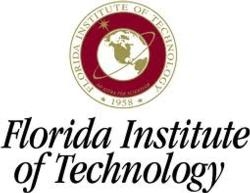Thu, Feb 21, 2013
Proposal Would Seek To Better Understand Alzheimer's Disease
Florida Institute of Technology researchers have won a prestigious grant enabling their biology experiment to travel on a flight to the International Space Station (ISS). Their proposal, "Self-Assembly in Biology and the Origin of Life (SABOL): A Study into Alzheimer's," was just one of eight proposals chosen by Space Florida and NanoRacks, LLC, in the ISS Research Competition. For the International Space Station experiment, the winners receive payload transportation to the ISS via an upcoming SpaceX Falcon 9 rocket launch from Cape Canaveral Air Force Station. Launch is currently slated for September 2013.

Florida Tech faculty researchers are former astronaut Sam Durrance, professor of physics and space sciences; and College of Engineering faculty members Daniel Kirk and Hector Gutierrez. They will work with about 30 science and engineering students to design and develop the payload and analyze the data. "We seek to gain an improved understanding of the origin of life on our planet and of Alzheimer's disease, and provide an opportunity to apply this new understanding for the betterment of humanity," said Durrance.
Durrance leads the biological science experiment, which will investigate the spontaneous assembly of amyloid proteins into long linear fibers. Postmortem studies of neurons taken from Alzheimer's disease victims show accumulated linear amyloid fibers composed of either Tau proteins or amyloid-beta peptides. Both can self-organize in solution through colloidal interactions.
However, the mechanisms of amyloid fiber assembly are difficult to study on Earth because the protein fibers settle, which prevents further growth. In weightlessness they should stay suspended and continue growing with multiple fibers wrapping around each other into helical fiber bundles. Analyzing these fiber bundles should improve the understanding of the internal structure of the amyloid fibers. The researchers believe that understanding the colloidal chemistry and biochemistry of amyloid fiber formation should lead to strategies for controlling the process.

The experiment will include about nine different incubation periods from one to 30 days during orbit operations. When the buffer solution and protein powder are mixed and the temperature is set, it takes about a day to agglomerate into protein spheres, a few days to form fibers and a week or more to become tangling fibers, which in 30 days on Earth, would settle.
The experiment, to be contained in a payload unit called a NanoLab Module—a four-inch cube—can be manipulated and monitored from Florida Tech laboratories while in flight.
(NASA image Dragon at ISS)
More News
The Industry Continues to be Rocked By Some Questionable Operations Recent investigations and a great deal of data has resulted in ANN’s SportPlane Resource Guide’s rep>[...]
Make Sure You NEVER Miss A New Story From Aero-News Network Do you ever feel like you never see posts from a certain person or page on Facebook or Instagram? Here’s how you c>[...]
Visual Approach Slope Indicator (VASI) An airport lighting facility providing vertical visual approach slope guidance to aircraft during approach to landing by radiating a directio>[...]
Airport Marking Aids Markings used on runway and taxiway surfaces to identify a specific runway, a runway threshold, a centerline, a hold line, etc. A runway should be marked in ac>[...]
Aero Linx: The Skyhawk Association The Skyhawk Association is a non-profit organization founded by former Skyhawk Pilots which is open to anyone with an affinity for the A-4 Skyhaw>[...]
 Unfortunate... ANN/SportPlane Resource Guide Adds To Cautionary Advisories
Unfortunate... ANN/SportPlane Resource Guide Adds To Cautionary Advisories ANN FAQ: Turn On Post Notifications
ANN FAQ: Turn On Post Notifications ANN's Daily Aero-Term (04.29.24): Visual Approach Slope Indicator (VASI)
ANN's Daily Aero-Term (04.29.24): Visual Approach Slope Indicator (VASI) ANN's Daily Aero-Term (04.28.24): Airport Marking Aids
ANN's Daily Aero-Term (04.28.24): Airport Marking Aids ANN's Daily Aero-Linx (04.28.24)
ANN's Daily Aero-Linx (04.28.24)




